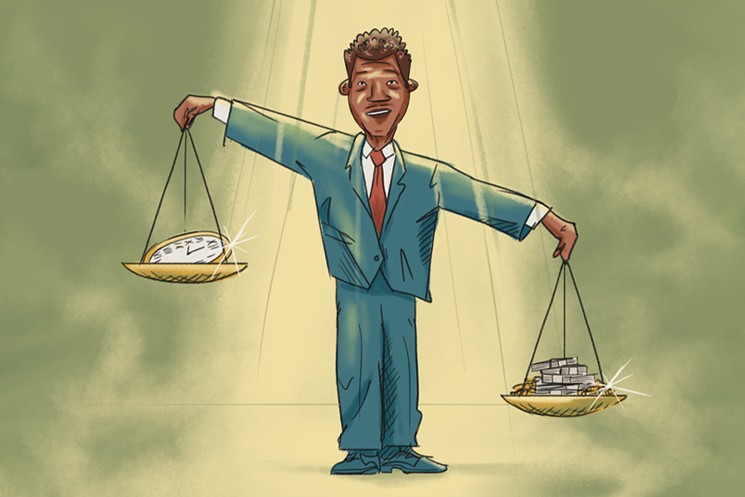Summary— The annual allowance is the most you and your employer can save into your pension within a tax year before you are required to pay tax on those contributions.
— An annuity is a retirement product that allows you to swap some, or all, of your pension savings for a regular income that’s guaranteed to be paid for life.
— Annuities are provided by a handful of insurance companies, and how much you get will depend on the annuity rate offered by the provider at the time, as well as other factors.
— Unlike some other retirement options, you don’t need to worry about how much to withdraw or what the stock markets are doing with the key benefit being that your income will be secure no matter what happens.
— Annuities can be bought any time from age 55 (rising to 57 from 2028). You can usually choose to have up to a quarter (25%) of the amount paid to you as a tax-free cash lump sum, and use the rest to buy the annuity. The annuity income you receive is taxed as earned income.
An annuity - that being a guaranteed income for life - was previously the ‘go to’ mechanism upon retirement to ensure your pension savings lasted for the remainder of your life. This was until 2015, when the shackles were loosened and a suite of pension freedoms were granted to allow, from age 55, choice as to how, when and if you can access your pension savings or pension pots (note this applies to ‘defined contribution’ pensions only).
Where in the past, the majority of people solely purchased an annuity with their pension pot, as of 2015 you were granted the choice to draw some, or all of your pension pot in one go, or at different times, or simply leave it.
There are now numerous ways to draw an income from your pension, including:
- To purchase a guaranteed annuity income for life or for a set period;
- To elect for flexible retirement income – this is called drawdown;
- To take the whole pot at once – known as ‘Uncrystallised Funds Pension Lump Sum’ (UFPLS);
- To take a mixture of all of the above or partial drawdown/UFPLS.
- To leave your pension invested;
It is important to stress that different options and solutions apply to different people, hence why a variety of options exists!
With regards to the traditional and, in effect, most restrictive option available, The Business School (previously Cass Business School) has commented that ‘annuity rates are currently at an historic low and this is forecast to continue. If you die young the annuity dies with you and so you risk wasting your money by annuitizing too early.’ People save for their lives to enjoy their retirement, and given the rates are at historic lows it’s not surprising that they may wish to gain more value from their investment.
At present, should a 55 year old man in good health, purchase an annuity for £100,000 in which he receives a 25% tax-free lump sum (i.e. £25,000), at current rates he would receive the miserly sum of £2,575.32 per annum. Note that this example is inclusive of an annual 3% increase, which is an important feature to protect the value of the annuity payments against inflation.
In the case of an annuity, unless specified when the annuity is purchased that it is done so under joint life, the payments will cease on your death regardless of age.
In contrast, the retirement option of drawdown is more flexible than an annuity. You can draw as much money as you wish to at any time and leave the remainder invested achieving growth against inflation.
Nevertheless, it is important to note that without a guaranteed lifetime income providing longevity ‘insurance,’ the nature of a great number of people’s habits of overconsumption alongside the 2015 pension freedom reforms, provides a case for many of not ‘if’ your pension pot will run out in later retirement - but ‘when’.
People cannot manage longevity risk apart from extreme cases (such as terminal illness), but what they can manage is whom they may wish to receive their pension pot on death. From a legacy perspective, drawdown pensions offer greater sums to whomever has been nominated to receive your pension on death. In the case of an annuity, unless specified when the annuity is purchased that it is done so under joint life, the payments will cease on your death regardless of age.
What it boils down to is that we now have greater autonomy over our pensions and how we wish to use them, but this puts at risk the longevity of pension savings if poorly managed. At current rates, annuities are secure but offer a reduced return on investment. From a purchasing power and legacy perspective, if managed smartly and correctly, then for some individuals it can be attractive to utilise the freedoms afforded to us in 2015.
Investment involves risk. The value of investments and the income from them can go down as well as up and investors may not get back the amount originally invested.
The information provided in this document is of a general nature. It is not a substitute for specific advice with regard to your own circumstances.
Any views expressed are those of the author. All figures were correct at the time of going to print. You are recommended to obtain professional advice before you take any action or refrain from action. You should contact the person at JM Finn with whom you usually deal if you wish to discuss any of the topics mentioned.
Click here for more articles from our Pension Report
Is an annuity still the right option
Download



